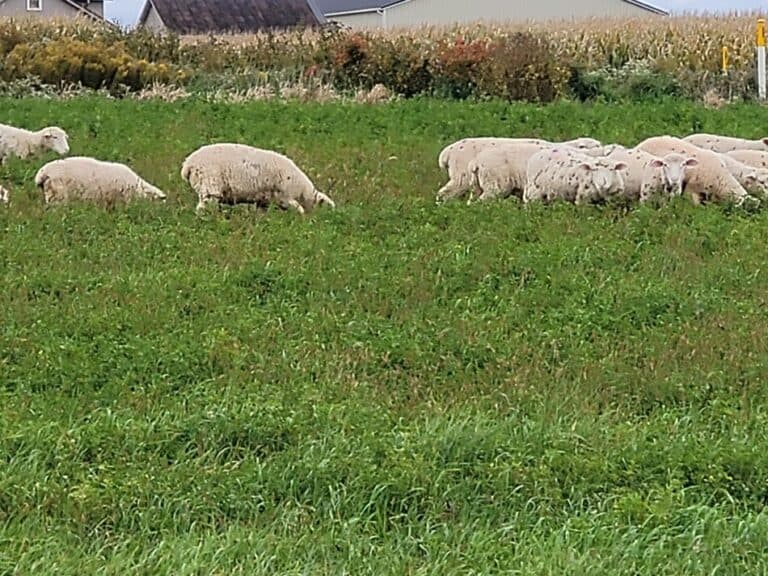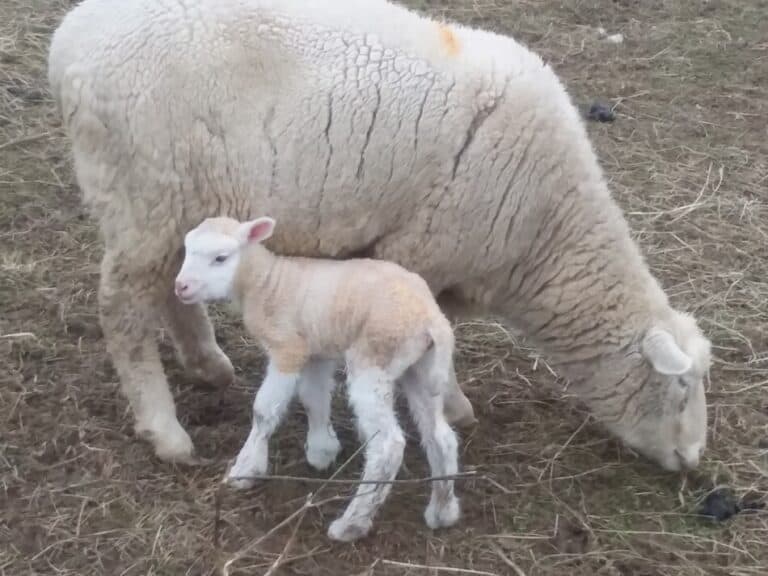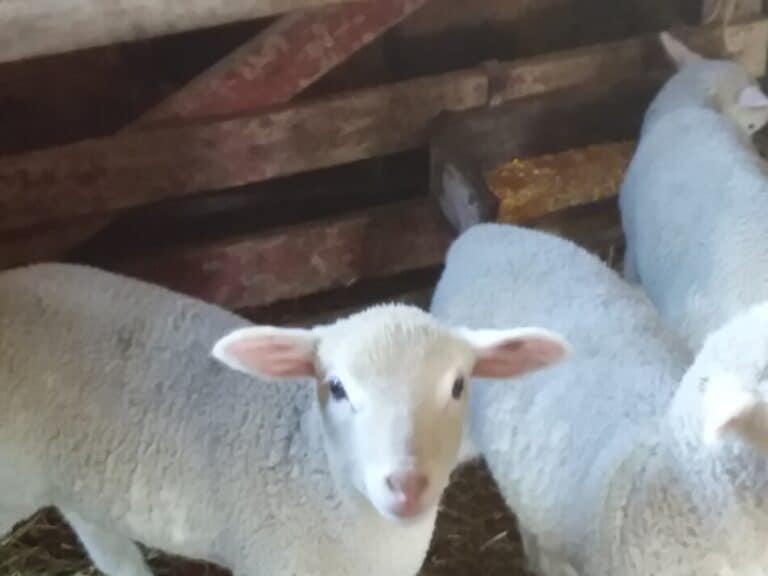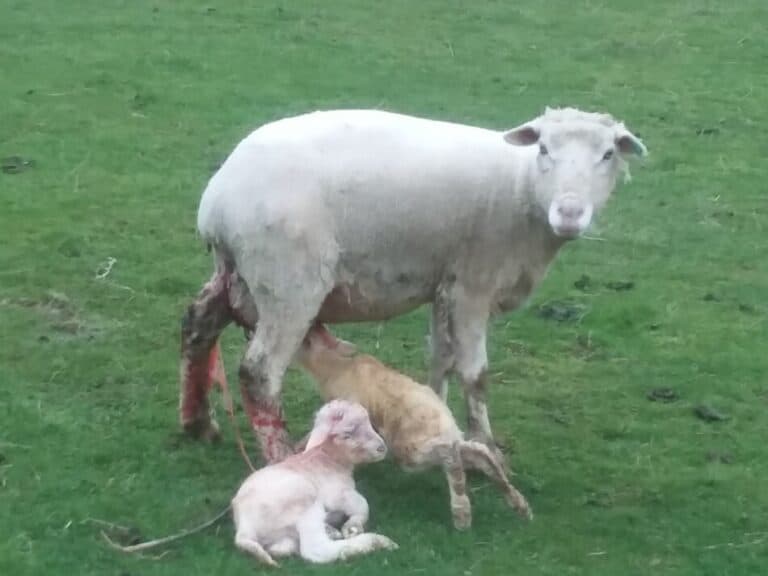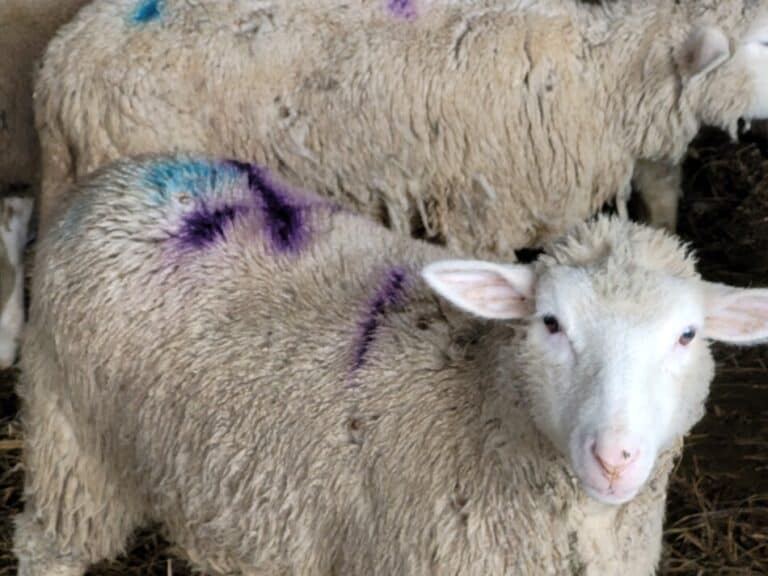How Many Lambs Do Sheep Have? (3 factors determine this)
Sheep normally give birth to 1 or 2 lambs at a time, with higher numbers possible in some prolific breeds raised under great management. But, chances are you already knew that so what about your sheep?
Since different breeds of sheep and varying flock conditions produce different numbers of lambs, how many lambs can you expect your sheep to have?
Sheep generally have 1 or 2 lambs, with an average of 1.5 lambs per ewe as a good number to calculate off of.
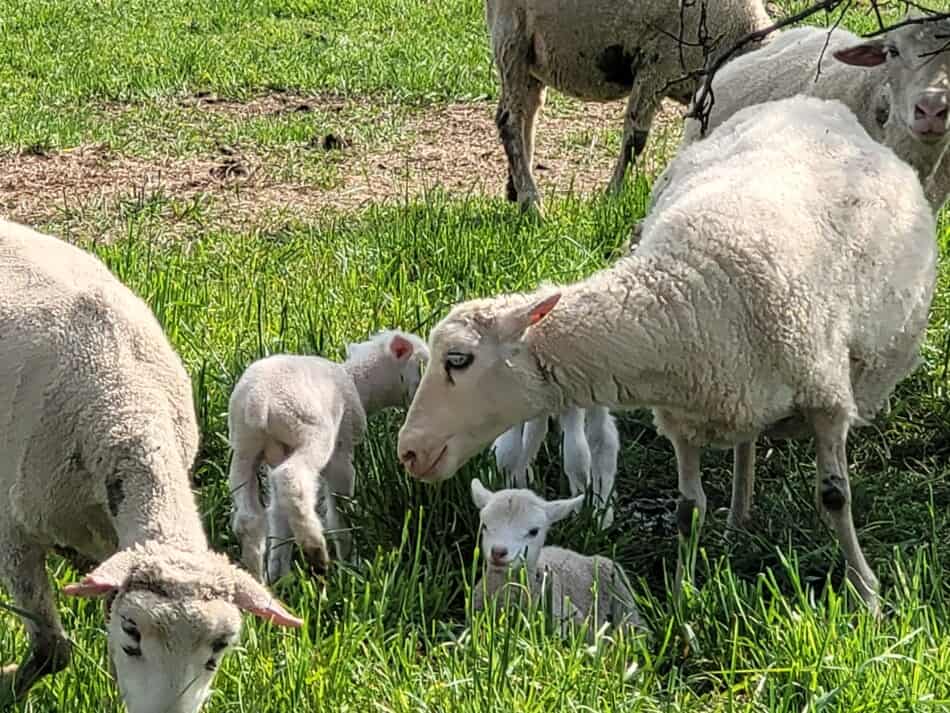
Lamb numbers are determined by both genetics and environment, so a breed known for twins will be more likely to have twins under good management.
However, a breed that tends to have singles, for instance, even when under the best management is not going to have more lambs than a breed known for twins under that same good management.
The difference is the genetics of the sheep. Good management can bring out the best in the genetics of the flock, but can not make up for genetic limitations.
The 8 Friendliest Sheep Breeds gives you some examples of beginner friendly sheep that are pretty versatile and will suit many new to sheep farmers.
Most sheep breeds will have an average of 1.5 lambs per ewe
Most sheep breeds fall into a middle ground area, with 1.5 lambs per ewe as an average per lambing. If you are not sure where your sheep fit (high, mid or low) lambing percentage wise, 150% is a good guess.
It is important to realize that these numbers probably depend upon additional care at lambing.
To keep these lambs alive tends to require indoor lambing and care, then putting the ewe and her lambs with a small group of peers then adding to the size of the group as the lambs get bigger.
If you are keeping the sheep outside, especially for lambing, you will be unlikely to keep the 1.5 lambs per ewe.
In this situation, you are more likely to end up at 1.2 or 1 lamb per ewe since the sheep are in a less controlled environment.
Best Sheep Breeds for Meat will give you a list of sheep breeds that will produce good lambs for market.
Some breeds are known for higher lambing percentages
A few breeds of sheep are known for their unusually high lambing percentages, with triplets and quads showing up with some frequency.
Not all ewes in these breeds will have high lamb numbers every year, but the numbers are much more likely in these ewes than in other sheep.
Not sure where your sheep should be as far as lambing percentage goes? Scroll down to Table 2 in Choosing Breeds for Producing Profitable Market Lambs, read the column “Average born per lambing”.
Breeds that have more lambs are called prolific breeds
Prolific breeds are breeds of sheep that are known to have litters of lambs (3 or more). Prolific breeds of sheep would be breeds like Booroola Merino, Finn and Romanov.
These breeds or crosses with 50% or more of one of these breeds of prolific sheep should get the shepherd more than average number of lambs born per ewe.
The interesting part about lamb numbers is that you can reduce the lambs born to a more prolific sheep breed back to average numbers by poor management of the flock.
The ewe can only do so much, an equal if not larger share of lambing percentages is your management. The better job you do managing the flock, the more likely you are to reach the flock’s potential.
Some breeds have lower lambing percentages
Some breeds of sheep tend to have lower lambing percentages than average. Generally speaking, the hardier the breed the less you can expect multiple births.
This makes sense, if the sheep are expected to be scrappy and somewhat take care of themselves, then they are going to need to be thrifty and that means one lamb would be the norm.
For instance, a hardy hill breed sheep like a Scottish Blackface (118% lamb crop SRUC) is less likely to have twins than a less hardy, small farm sheep like a Dorset (170% lamb crop Dorset Sheep Breeders).
In areas where conditions are harsh, the hardy breeds do well, partly because they only have one lamb to care for.
If you have easier conditions for your flock, you may find a breed with a more middle ground lambing percentage to be the best option.
Raising Sheep For Profit goes over the numbers for raising sheep and shows you where to find the numbers to figure out a budget for your sheep operation.
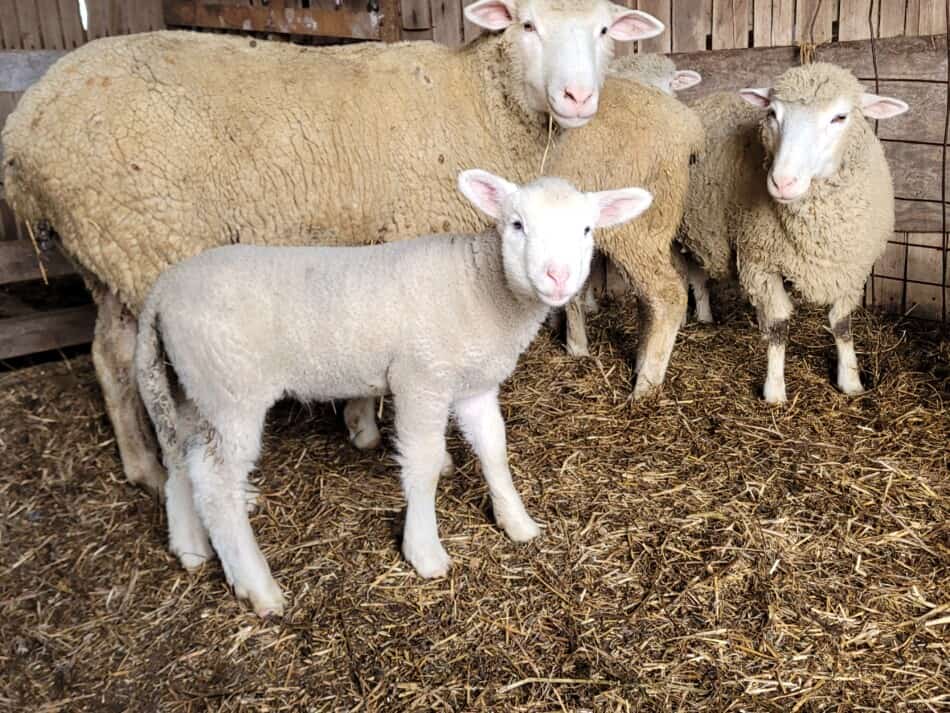
Flock health affects number of lambs born
Healthy sheep can have more lambs, at least up to their genetic potential. Making sure your sheep are well cared for, including during the non breeding season will pay off in lamb numbers the following year.
Keep parasite load of your flock under control
Keep the parasite load on your sheep under control.
Forgetting about the management of the ewes once the lambs are weaned or sold will lead you to a disappointing season next year. This is something you have to keep up with.
The best time to work on improving the condition of your ewes is when they are dry (not nursing lambs) and ideally, when they are open (not bred).
Get those parasites under control and have the ewes in good body condition for breeding season. This will get you closer to achieving the lambing percentage that your flock is capable of having.
Healthy flocks have and raise more lambs
Many folks mistakenly believe that lambing numbers are only affected by lamb survival, not so.
Lamb survival is big, of course, but the things you do throughout the year to make sure that the ewes and rams are in good condition pre breeding is the first step.
Without this, you are playing catch up the entire year, which is tough to do. This means you need to work on getting your flock health up to top notch as soon as you wean.
Give yourself some time here, it takes some time to get the ewes back into condition. Map this out on your calendar, you want the ewes in good shape at least a month before breeding season.
Fix any other health issues with your sheep.
- Do you have some hooves out there that need trimmed but you haven’t quite got to it?
- Have you checked teeth? Good teeth are required to support lambs.
- How are her teats? Two good teats are needed, cull out poor udders.
- Do you have a mineral available, all the time? If not, now is a great time to start.
Make sure that the ewe flock is in “fighting form” before breeding, this is the start of a great lambing season.
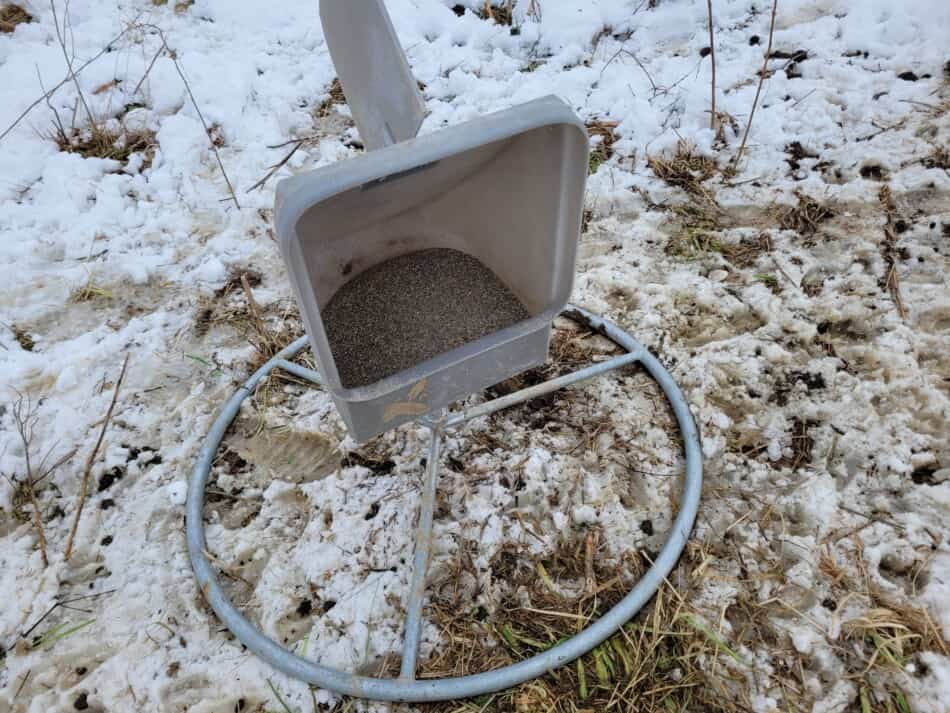
Our latest improvement is to make sure the flock has minerals available at all times, this is in addition to a salt block.
Since the main flock is outside, we went with a mineral feeder designed to handle the weather while keeping the mineral dry and off the ground.
We hope the year round attention to mineral availability will bump up lambing percentages. We’ll know more after lambing this spring!
Nutrition affects number of lambs born
If your sheep have the genetic predisposition towards multiple births, it is your management of the flock that will get you there or not. One of the keys here is nutrition.
Have the flock in ideal body condition before breeding season. I know that I touched on body condition above, but here we are going deeper, we are kind of topping off their nutrition.
It’s best if you could have the ewes on an increasing level of nutrition for the few weeks before breeding season to increase the likelihood of multiple births.
This is called flushing, and it simply means giving the flock some additional calories right before breeding to get them to ovulate more eggs when they come into heat.
Flushing works because the ewe’s body will restrict lamb numbers due to lack of nutrition or body condition at breeding, which makes sense since the ewe needs plenty of feed to carry and raise the lambs.
If you give the flock great nutrition a few weeks before breeding, her body says “things are looking good this year so we can have 2 babies this year, rather than just one”, which increases your ewes with twins.
This is why you need to have the flock in great shape before flushing, the flushing works because it is on top of the good ewe health that you have already worked on and helped the ewes achieve.

